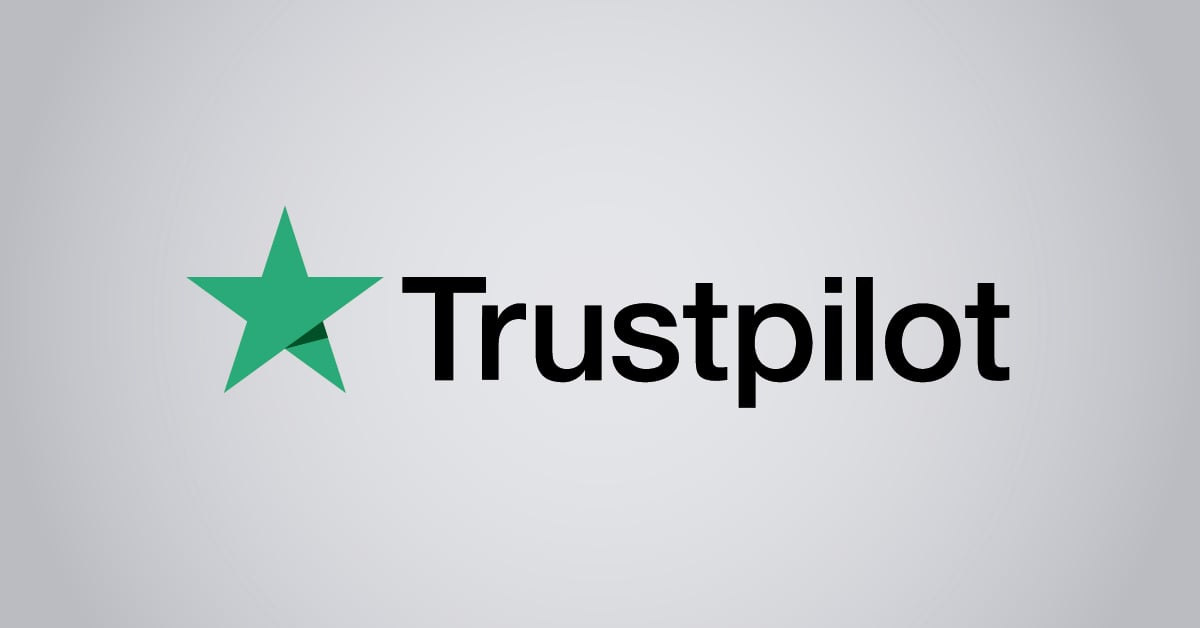There are a lot of SSL errors out there.
Way too much, right?
You as a sysadmin know that for sure – Certificate Errors, Configuration Errors, Server Errors, Protocol Errors, and others.
Here you’ll find a list of the most common xxxxx errors and proven quick fix solutions:
- SSL Error “ssl_error_no_cypher_overlap”
- SSL Error “ssl_error_rx_record_too_long”
- SSL Error “ssl_error_syscall”
- SSL Error “ssl_error_bad_cert_domain”
- SSL Error “ssl_error_internal_error_alert”
- SSL Error “ssl error 31”
- SSL Error “ssl error 61”
- SSL Error “ssl certificate problem: unable to get local issuer certificate”
- SSL Error “ssl error: unable to verify the first certificate”
- SSL Error “ssl_protocol_error”
- SSL Error “ssl handshake error” or “ssl handshake failure alert”
And you’ll find the solution to get rid of ALL SSL errors – forever: Test PRTG as your new monitoring tool and get stared within minutes!
 Quick fix
Quick fix
Did you receive the error message “ssl error no cypher overlap” while using Firefox or another web browser? Then you are dealing with one of the most common SSL errors. The cypher overlap error occurs due to a misconfiguration of the TLS/SSL settings.
The SSL error can easily be solved by adjusting the settings in your browser. If you are using Mozilla Firefox, access the settings page and choose the add-on section. Check the add-on list for any extensions that you did not install yourself. Deactivate all unnecessary add-ons and plug-ins, then restart the browser.
You can also reset both the TLS and the SSL settings. In your brower, type about:config to open the settings. Type TLS in the search box and look through the TLS settings. If there are any modified settings, restore them back to default. Repeat these steps to reset the SSL settings as well.
Best solution: https://www.thewindowsclub.com/ssl_error_no_cypher_overlap-firefox
 Proper fix
Proper fix
Switch to PRTG: PRTG uses the SSL Security Check Sensor and lets you use SSL to encrypt your own monitoring data. PRTG helps you secure data traffic and notifies you at once if the security rating changes.
Find out how PRTG’s Monitoring can help you get rid of SSL Errors
 Quick fix
Quick fix
The common SSL error “ssl error rx record too long” may occur in your browser when visiting a website via HTTPS. The error is often accompanied by the error message “SSL received a record that exceeded the maximum permissible length” or a similar message. This means that the web server is sending HTTP data instead of HTTPS data.
This common SSL issue is usually caused by an error in the SSL implementation on the server itself. There are several things that you can do to solve the problem:
- Ensure that SSL is configured correctly on the server.
- Check if your browser is using the same port as the web server. To use port 443, some servers such as Apache require a configuration first.
- If you are using a proxy server, the error can show up as well. In this case, make sure that your local proxy is configured correctly.
Best Solution: https://www.ssl247.de/kb/ssl-certificates/troubleshooting/apache/ssl-error-rx-record-too-long-firefox-apache-tomcat or https://www.xolphin.com/support/Error_messages/Error_-_ssl_error_rx_record_too_long
 Proper fix
Proper fix
Switch to PRTG: PRTG uses the SSL Security Check Sensor and lets you use SSL to encrypt your own monitoring data. PRTG helps you secure data traffic and notifies you at once if the security rating changes.
Find out how PRTG’s Monitoring can help you get rid of SSL Errors
 Quick fix
Quick fix
Are you facing the error message “ssl error syscall”, there is a problem with your SSL configurations. This can be caused by a disabled proxy protocol which leads to a failed request of the SSL handshake.
To fix the problem, make sure that you enable the proxy protocol in the inbound traffic. Also check if TLS is properly configured in the web server, as a misconfiguration of the server may lead to this error as well.
Best Solution: https://help.mulesoft.com/s/article/Receive-SSL-ERROR-SYSCALL-Error-Requesting-Via-Edge-in-a-RTF-Cluster or https://superuser.com/questions/1548946/curl-error-ssl-error-syscall
 Proper fix
Proper fix
Switch to PRTG: PRTG uses the SSL Security Check Sensor and lets you use SSL to encrypt your own monitoring data. PRTG helps you secure data traffic and notifies you at once if the security rating changes.
Find out how PRTG’s Monitoring can help you get rid of SSL Errors
 Quick fix
Quick fix
The error code “ssl error bad cert domain” and the error message “The certificate is only valid for the following names” is often experienced by users while trying to access their SSL encrypted website or network. The error code indicates that there is a configureation problem with the SSL certificate of the website. The SSL error is commonly reported by Firefox users, but may also occur in other browsers.
Depending on the individual cause of the error, try the following troubleshooting solutions:
- If caused by an SSL misconfiguration of the website itself, the configuration needs to be adjusted by the website’s admin. If it is your website, make sure that your SSL certificate is active and switch to HTTPS.
- In some cases, the browser’s cache and cookies may lead to an SSL error. If this is the case, you can simply solve the problem by clearing the cache in the settings.
Best Solution: https://appuals.com/fix-ssl_error_bad_cert_domain/
 Proper fix
Proper fix
Switch to PRTG: PRTG uses the SSL Security Check Sensor and lets you use SSL to encrypt your own monitoring data. PRTG helps you secure data traffic and notifies you at once if the security rating changes.
Find out how PRTG’s Monitoring can help you get rid of SSL Errors
 Quick fix
Quick fix
SSL error code “internal error alert” is a common problem faced by users of Mozilla Firefox and other web browsers. The error message indicates that there is a problem with the secure SSL connection. It may be caused either by the SSL certificate or by the settings of your browser.
To fix the problem, try the following troubleshooting steps:
- Make sure you are using a valid SSL certificate.
- Update your browser to the latest version.
- Disable unknown or unnecessary add-ons in the Firefox settings.
- Ensure that HTTPS is set up correctly.
- If the error persists after these steps, restart your browser.
Best Solution: https://comparecheapssl.com/how-to-fix-ssl-error-on-firefox-a-complete-guide/
 Proper fix
Proper fix
Switch to PRTG: PRTG uses the SSL Security Check Sensor and lets you use SSL to encrypt your own monitoring data. PRTG helps you secure data traffic and notifies you at once if the security rating changes.
Find out how PRTG’s Monitoring can help you get rid of SSL Errors
 Quick fix
Quick fix
Are you facing Citrix client SSL error code 31? Then you are dealing with one of many SSL errors with Citrix. Error 31 can be caused by a variety of misconfigurations or outdated version of the service provider.
To solve the problem, make sure the SSL certificate is valid. Also update your service provider to the newest version to avoid problems with the compatibility. Also check if any corporate settings or your firewall is blocking the connection.
Best Solution: https://discussions.citrix.com/topic/386884-hdx-adaptive-display-doesnt-work-ssl-error-31/ or https://support.citrix.com/article/CTX113309
 Proper fix
Proper fix
Switch to PRTG: PRTG uses the SSL Security Check Sensor and lets you use SSL to encrypt your own monitoring data. PRTG helps you secure data traffic and notifies you at once if the security rating changes.
Find out how PRTG’s Monitoring can help you get rid of SSL Errors
 Quick fix
Quick fix
SSL error 61 is an error code regularly experienced by Citrix users. There are several error messages that can be displayed for receiver users when accessing Citrix StoreFront or web interface applications, such as:
“Cannot connect to the Citrix XenApp Server. SSL Error 61: You have not chosen to trust ‘Certificate Authority’, the issuer to the server’s security certificate.”
“The server certificate received is not trusted (SSL Error 61)”
“You app is not available. Try again later.”
As a system administrator, you can try the following solutions to get rid of SSL error 61:
- Update to the latest receiver version, as older versions may not support SHA2 certificates.
- Ensure that you have the required root certificate or intermediate certificate. You can download the certificates from your SSL certificate provider. If you use an antivirus software, make sure that your antivirus software trusts the SSL certificate.
- Check if the server certificate is compliant with the instruction in RFC 3280 in terms of the Enhanced Key Usage field.
Best Solution: https://support.citrix.com/article/CTX101990
 Proper fix
Proper fix
Switch to PRTG: PRTG uses the SSL Security Check Sensor and lets you use SSL to encrypt your own monitoring data. PRTG helps you secure data traffic and notifies you at once if the security rating changes.
Find out how PRTG’s Monitoring can help you get rid of SSL Errors
 Quick fix
Quick fix
The error message “SSl certificate problem: unable to get local issuer certificate” sometimes occurs when making a request for a secure HTTPS destination. The SSL error is caused by a problem with the root certificate. When you use client SSL and make a request for a secure HTTPS source, you need to verify your identity by sharing your SSL/TLS certificate. If this step is not completed successfully, the error message pops up.
There are several solutions to fix the SSL certificate problem:
- Change php.ini while maintaining SSL.
- Maintain SSL and add the following code:
$ch = curl_init();
$certificate_location = ‘/usr/local/openssl-0.9.8/certs/cacert.pem’;
curl_setopt($ch, CURLOPT_SSL_VERIFYHOST, $certificate_location);
>curl_setopt($ch, CURLOPT_SSL_VERIFYPEER, $certificate_location);
- 3. Disable SSL (not recommended).
Best Solution: https://aboutssl.org/fix-ssl-certificate-problem-unable-to-get-local-issuer-certificate/
 Proper fix
Proper fix
Switch to PRTG: PRTG uses the SSL Security Check Sensor and lets you use SSL to encrypt your own monitoring data. PRTG helps you secure data traffic and notifies you at once if the security rating changes.
Find out how PRTG’s Monitoring can help you get rid of SSL Errors
 Quick fix
Quick fix
If your server responds to your request with the error message “SSL error: unable to verify the first certificate”, the server is configured incorrectly and cannot verify your SSL certificate. The error may also occur when the name on the SSL certificate does not match the IP address.
To solve the problem, make sure that the HTTPS SSL certificate is valid and installed properly.
Best Solution: https://support.oneidentity.com/de-de/kb/288670/error-unable-to-verify-ssl-certificate-to-resolve-this-issue-import-the-appropriate-certificates-including-the-root-ca- or https://community.nodebb.org/topic/14920/error-unable-to-verify-the-first-certificate-how-to-fix
 Proper fix
Proper fix
Switch to PRTG: PRTG uses the SSL Security Check Sensor and lets you use SSL to encrypt your own monitoring data. PRTG helps you secure data traffic and notifies you at once if the security rating changes.
Find out how PRTG’s Monitoring can help you get rid of SSL Errors
 Quick fix
Quick fix
Error code “ssl protocol error” is a typical SSL error on Google Chrome. Your browser may also state the error message “This site can’t provide a secure connection” along with the error code. If you encounter this problem, there are many possible solutions:
- Set the correct date and time on your system, as the SSL certificate is sensitive to your system’s settings.
- Clear your browser’s SSL state in the Google Chrome settings.
- Disable QUIC protocol which is enabled by default in Google Chrome.
- Check your antivirus settings and make sure it scans SSL/TLS protocols correctly.
- If the website’s SSL/TLS protocols are not in line with your Chrome version, change the SSL/TLS protocol settings accordingly in the advanced settings.
Best Solution: https://www.thesslstore.com/blog/fix-err-ssl-protocol-error/
 Proper fix
Proper fix
Switch to PRTG: PRTG uses the SSL Security Check Sensor and lets you use SSL to encrypt your own monitoring data. PRTG helps you secure data traffic and notifies you at once if the security rating changes.
Find out how PRTG’s Monitoring can help you get rid of SSL Errors
 Quick fix
Quick fix
The SSL handshake error message can be received when the SSL handshake process fails. The SSL handshake is a process in which the browser sends a secure connection request to the web server. If this request fails, it results in the SSL handshake failure alert.
The SSL error can be caused by a number of reasons. Therefore, the solution depends on the cause. These are the most common ones:
- The SSL/TLS protocol is not supported by the server.
- The certificate does not match the hostname in the URL.
- The certificate is invalid or has expired.
- The client server is unable to communicate with the servers.
You can fix the problem by adjusting the settings and by making sure that the SSL/TLS certificates are configured correctly.
Best Solution: https://www.rapidsslonline.com/blog/ssl-handshake-failed-error/
 Proper fix
Proper fix
Switch to PRTG: PRTG uses the SSL Security Check Sensor and lets you use SSL to encrypt your own monitoring data. PRTG helps you secure data traffic and notifies you at once if the security rating changes.
Find out how PRTG’s Monitoring can help you get rid of SSL Errors
Choose your solution: Bugfix or replacement
Trusted by 500,000 users and recognized
by industry analysts as a leader
“Fantastic network and infrastructure monitoring solution that is easy to deploy and easier still to use. Simply the best available.”
“Software is absolutely perfect, Support is superior. Meets all needs and requirements, this is a must have solution if you are needing any form of monitoring.”
“The tool excels at its primary focus of being a unified infrastructure management and network monitoring service.”


